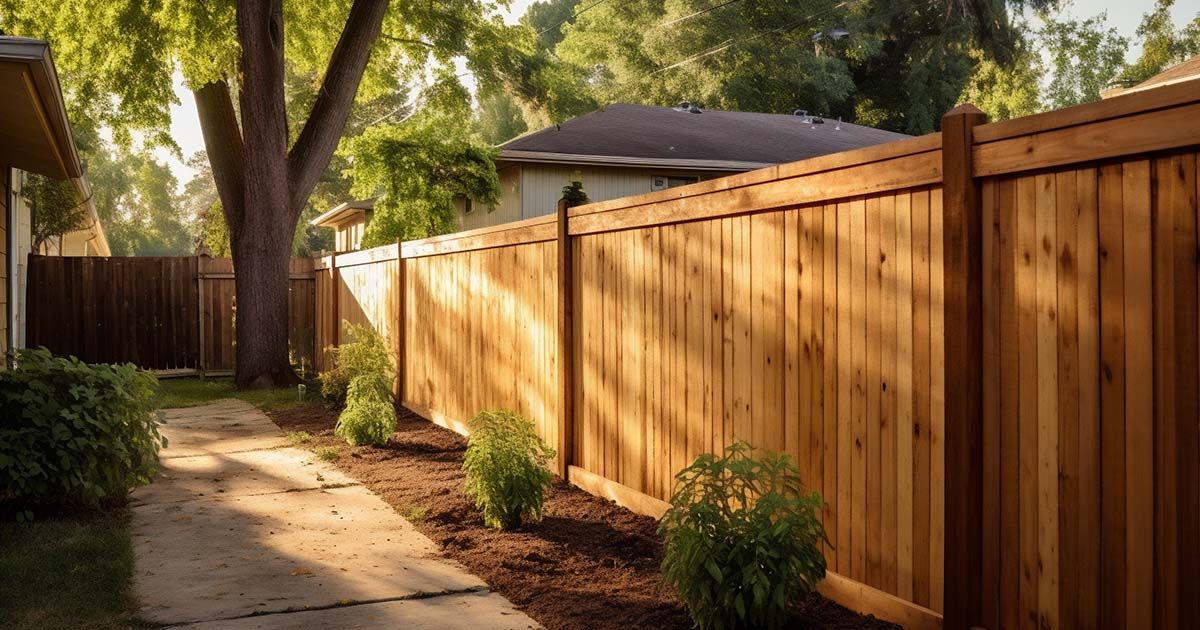Resolut Blog
Understanding Fence Height Regulation of Security Fencing
Are you ready to start construction on your fencing project? Before you hammer wood into the ground, take a moment to understand the fence height regulations set by your local zoning bylaws.

When it comes to enhancing the security and aesthetics of your property, one critical aspect you must consider is adhering to local fence height regulations. Why is this important?
First, it ensures compliance with the law, avoiding potential fines or penalties that may be imposed for non-compliance. Second, adhering to these regulations helps maintain harmony within the community, preventing disputes with neighbours or local authorities.
Most importantly, by staying informed about fence height regulations, you can make informed decisions about your fencing projects, taking into account the unique requirements of your municipality.
In this blog post, we will provide a comprehensive guide to navigating Ontario's fence height regulations. We'll cover various aspects, including specific residential and commercial height restrictions, insights into zoning bylaws that play a critical role in Ontario, the process of obtaining permits, and practical tips for ensuring compliance.
By the end of this blog post, you'll have a clear understanding of what it takes to install secure and legally compliant fencing on your property.
At Resolut Construction, we specialize in all things fencing. Recognized in the Waterloo Region and beyond for quality and timeless workmanship, we have been building premium residential and commercial deck and fence projects for the past 30 years. If you’re planning to install a new fence in the near future or would like your existing one looked at, don’t hesitate to reach out. We will gladly come to assist with your project!
Let’s begin!
Overview of Ontario Fence Height Laws
Legal rules regarding fence height in Ontario are generally set at the municipal level as bylaws and vary between municipalities.
Local governments have the authority to set specific bylaws that align with the unique characteristics and needs of their communities. These variations can include differences in maximum height limits, materials allowed, and setback requirements.
Fencing bylaws are in place to ensure the safety, privacy, and aesthetics of properties while maintaining community harmony. For example, what may be permissible in a rural area of Ontario may not comply in a densely populated urban centre.
The specifics of fence bylaws can also vary depending on the type of property (residential, commercial, industrial) and the intended purpose of the fence.
While security is important, excessively tall fences can impact neighbours' views and disrupt the overall visual appeal of a neighbourhood. Understanding these general principles helps you to make informed decisions about your fencing projects.
Given the potential variations in fence height restrictions between municipalities, it’s wise to consult local bylaws when planning a fencing project. These bylaws provide detailed information on the specific rules that apply to your property. Consulting with your local government or visiting their official website can provide you with up-to-date and accurate information.
Residential Fence Height Restrictions
When it comes to residential properties, there are specific rules in place to govern the height of security fencing.

Bylaws that address fence height aim to balance the need for security and privacy with the aesthetics and harmony of the neighbourhood. The exact height restrictions vary between municipalities, but there are some common principles that generally apply.
For example, in many residential areas in Ontario, front yard fences are typically subject to lower height limits than backyard fences. Common height restrictions for front yard fences may range from 3 to 4 feet (approximately 0.9 to 1.2 meters).
Backyard fences often have higher permissible heights, typically ranging from 6 to 8 feet (approximately 1.8 to 2.4 meters). These taller fences offer increased privacy and security in areas where residents expect more seclusion.
To provide a more concrete understanding, here are some examples of common residential fence height limits:
Front yard fences: Typically restricted to a height of 3 to 4 feet.
Backyard fences: Often allowed to reach heights of 6 to 8 feet.
Corner lots: Special considerations may apply to corner properties to maintain visibility at intersections.
Commercial and Industrial Fence Height Restrictions
In commercial and industrial settings, security fencing is an important decision to make. Businesses must protect their premises, assets, and sensitive information.
The exact requirements for commercial and industrial security fencing can vary depending on the nature of the business and its location. However, there are some common elements:
Height Restrictions: Security fences in these settings are often subject to higher maximum height limits compared to residential properties. Heights can range from 6 to 10 feet (approximately 1.8 to 3 meters) or more, depending on the specific security needs and zoning.
Materials and Design: Legislation may specify the materials and design features that must be used in security fencing. Durable and robust materials are typically required to deter unauthorized access.
Perimeter Security: Emphasis is placed on creating a secure perimeter around the property. This may include features like anti-climbing measures, barbed wire or razor wire, access control systems, and surveillance cameras.
Understanding Local Zoning Bylaws in Ontario
The zoning bylaws in each municipality dictate how properties can be used, what can be built on them, and where structures like fences can be located. Understanding these bylaws is vital to ensure that your fence project complies with local rules.
Municipal zoning bylaws in Ontario are directly connected to restrictions on fence height. These laws determine the zoning classification of a property, which, in turn, influences the applicable fence height limits.
Zoning classifications can vary widely and include categories such as:
Residential
Commercial
Industrial
Agricultural
Each zoning classification comes with its own set of restrictions, including rules regarding fence heights. For example, a residential property in a suburban neighbourhood may have different fence height restrictions compared to an industrial property in an urban area.
Property Lines and Setbacks
Property lines and setbacks are essential to understand for determining where a fence can be installed on your property.
Property Lines: Zoning bylaws often specify that fences must be installed within the boundaries of your property. Accurate property line identification is crucial to ensure that your fence does not encroach onto neighbouring properties.
Setbacks: Setbacks refer to the distance between a structure (such as a fence) and the property line or other structures. In some cases, zoning bylaws may require specific setbacks for fences, especially in densely populated areas or regions with specific geographic considerations, like waterfront properties.
Tips for Navigating Zoning Bylaws
Navigating Ontario's zoning bylaws can be complex, but there are several tips to help property owners navigate them effectively:

Consult Local Authorities
Reach out to your local municipality or city planning department for guidance. They can provide you with information on your property's zoning classification, specific fence height restrictions, and any setback requirements.
Review Zoning Bylaws
Obtain a copy of your local zoning bylaws and carefully review them. These bylaws contain detailed information about property use, fence restrictions, and any exceptions or variances that may be available.
Seek Professional Advice
Consider consulting with a professional surveyor or zoning expert who can accurately assess your property boundaries and provide guidance on fence placement. We are always here to help, so send us an email.
Community Involvement
Attend local community meetings or zoning board hearings to stay informed about changes in zoning that may affect your property.
How to Get Permits
Not sure where to start? Read on.
Research Local Requirements: Start by researching your local municipality's requirements for fence permits. Bylaws can vary, so try to understand the specific rules that apply to your area.
Complete Permit Application: Fill out the necessary permit application forms provided by your local government. These forms typically require details about your fence project, including its dimensions, materials, and location.
Pay Permit Fees: Be prepared to pay the required permit fees when submitting your application. These fees can vary depending on the municipality and the scope of your project.
Submit Supporting Documents: Along with your application, you may need to submit supporting documents such as property surveys, site plans, or any other information requested by your local authorities.
Wait for Approval: After submitting your application, there is usually a waiting period while local authorities review your request. This period can vary, so be patient during this time.
At Resolut Construction, we specialize in all things fencing. Recognized in the Waterloo Region and beyond for quality and timeless workmanship, we have been building premium residential and commercial deck and fence projects for the past 30 years. If you’re planning to install a new fence in the near future or would like your existing one looked at, don’t hesitate to reach out. We will gladly come to assist with your project!
Contributors
Latest Posts
Show All Recent Posts
Archive
-
2025
-
2024
-
December
-
November
-
October
-
August
-
July
-
June
-
May
-
April
-
March
-
February
-
January
-
-
2023
-
December
-
November
-
October
-
September
-
August
-
July
-
June
-
May
-
April
- Kitchener Waterloo Residential Fence: Buying Guide
- Incorporating Fencing into your Landscaping Design
- Choose a Chain Link Fence Installer You Can Trust
- Prepare Your Backyard for Summer: Outdoor Organization Ideas
- 7 Essential Tips For Your Kitchener Waterloo Fencing Project
- A Comprehensive Guide For Making Your Fence Pet-Friendly
-
March
-

